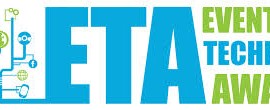What is RFID and how does it work?
RFID stands for Radio-Frequency IDentification. The acronym refers to small electronic devices that consist of a small chip and an antenna which transmits the identity (in the form of a unique serial number) of an object or person wirelessly, using radio waves. The chip typically is capable of carrying 2,000 … Continue reading
What is NFC?
Near field communication (NFC) is a set of standards for smartphones and similar devices to establish radio communication with each other by touching them together or bringing them into close proximity, usually no more than a few centimetres. Present and anticipated applications include contactless transactions, data exchange, and simplified setup … Continue reading
Can barcodes be used instead of RFID?
For access control and audience engagement, yes. A barcode is an optical machine-readable representation of data relating to the object to which it is attached. Barcodes allow for the organisation of large amounts of data. Originally barcodes systematically represented data by varying the widths and spacings of parallel lines, and … Continue reading
What are the differences between open and closed loop payment systems?
Closed loop payments allow consumers to pre-load funds into a spending account that is linked to the payment device (such as a wristband or card). Customers can re-load amounts during the event through a variety of mechanisms, including automatic top-up. Unspent funds at the end of the event are not … Continue reading



